Top 11 Technology-Driven Photography Trends of 2023
The latest top technology-driven photography trends in 2023 you can expect to see more of. Stay ahead of the curve and unleash your creativity as a photographer.
.jpeg)
With the pace of technology moving faster than you can say "cheese", it's helpful for photographers to stay up to date on the current trends. Can you imagine if a professional photographer came to the NBA finals, attempting to capture a slam dunk from Nikola Jokić with a dusty film camera? Our film camera enthusiast might find their reputation getting a little tarnished if all they can capture is a blurred streak indicating a mere sense of movement.
While we certainly believe there is a time and a place for film photography, let's not shy away from modern technology and what it can offer. If you learn the latest techniques and master the tools at your disposal, you'll have the power to transcend self-imposed limitations and develop your aesthetic in a purposeful way.
Year after year, technology redefines the art and science of photography. So, let's take a look at the hottest, technology-driven photography trends you can expect to see more of in 2023:
- Drone Photography
- Artificial Intelligence
- 360 Photography
- Vertical Orientation
- 3D Photography
- Food Photography
- Macro Photography
- Cinemagraphs
- High-contrast Photography
- Cyberpunk Aesthetics
- Surrealist Photography
Drone Photography
The availability of affordable drones has given even amateur photographers the opportunity to explore aerial photography. Previously, capturing aerial shots required helicopters or airplanes, which was definitely out of reach for the common person. Now, for only $100, social media influencers can engage their followers, inspire wanderlust, and foster a deeper appreciation for the beauty that surrounds us.
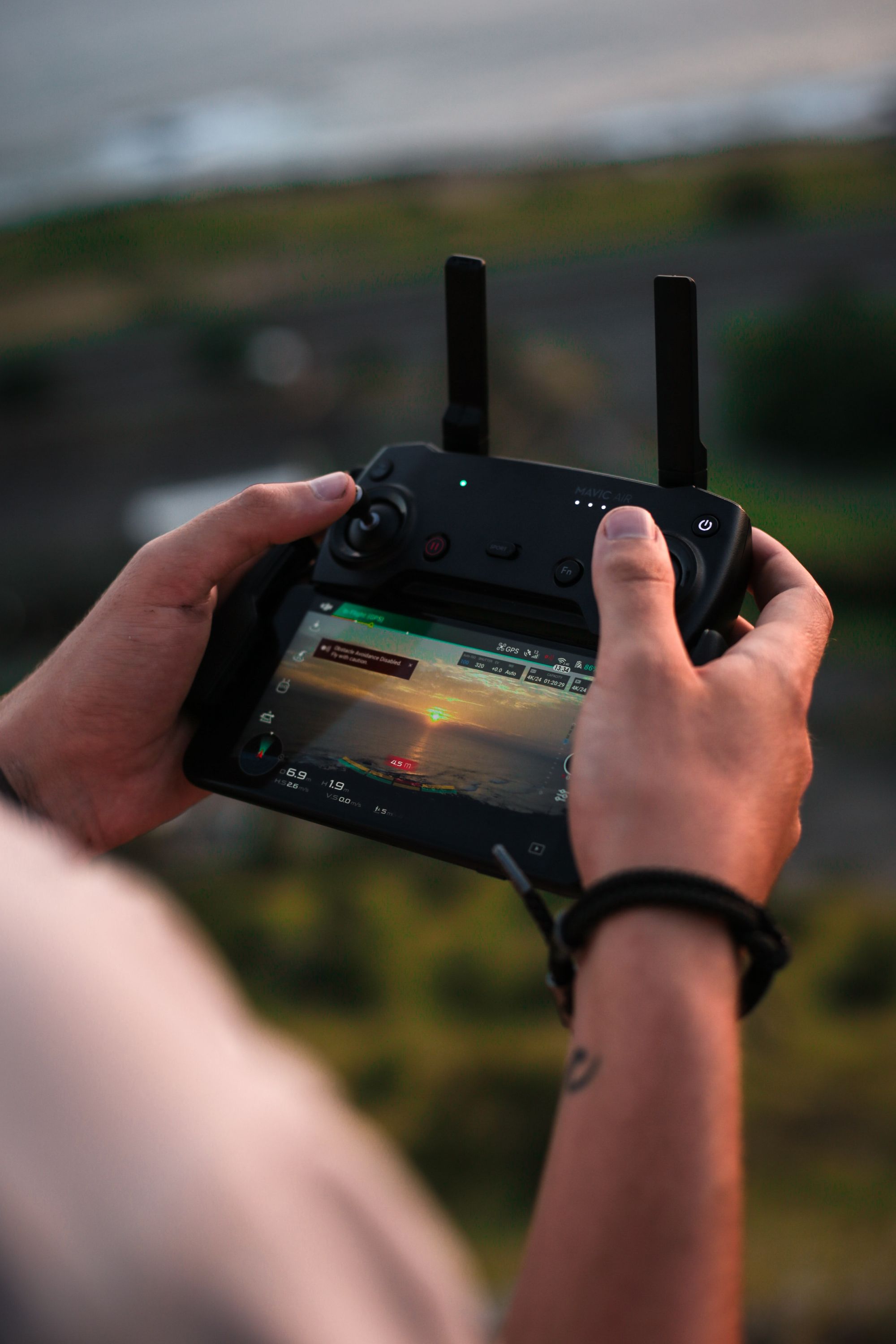

But while drones provide a more cost-effective alternative to aerial vehicles, they're also superior in terms of agility, which is especially useful when capturing video footage. Photographers can easily control the flight path of the drone, resulting in smooth, cinematic shots like this:
One of the award-winning drone photographers we'd like to spotlight is Kevin Krautgartner. Through a series of breathtaking aerial images, Krautgartner captures the sheer power inherent in the world-renowned Banzai Pipeline in Hawaii (below). The Pipeline, with waves reaching nine meters during peak swells, acts as a magnetic force for experienced surfers.
Nature certainly commands the spotlight in drone photography. Even when focusing on cityscapes, drone photography has a way of compelling photographers to observe and appreciate the natural world surrounding urban environments.
Aerial photographer Sara Zanini also works with drones to photograph scenes from unexpected angles. We love how she's captured the Sicilian town of Centuripe:
Drone photography has proven to be incredibly versatile, finding diverse applications across a wide range of fields:
Drone Wedding Photography: With the ability to soar above a wedding venue, drones can showcase the grandeur of the ceremony, reception, and surrounding landscapes.
Real Estate Photography: Real estate agents and developers often use drone photography to create compelling videos to engage potential clients. Aerial shots can provide a comprehensive view of a property, highlighting its features, surroundings, and amenities.
Environmental Photography and Monitoring: Drones equipped with specialized sensors and digital cameras can capture high-resolution images and collect data from remote or hazardous locations. This data can be used to assess ecological conditions, monitor wildlife populations, track changes in vegetation, or survey inaccessible areas.
Event Coverage: Drones are now commonly used for capturing aerial shots during sporting events, concerts, festivals, and other large gatherings. The dynamic perspectives provided by drone photography enhance the visual experience for viewers and add an extra layer of excitement to the event coverage.
Expect drones to evolve even further, offering advancements in image quality, stabilization, improved low-light performance, and even autonomy.
Artificial Intelligence
In the past, we anxiously awaited the development of photo prints, always hoping we were careful enough to keep our thumbs out of the frame or remove the lens cap.
Today, artificial intelligence (AI) has not only automated numerous processes, but it's also propelled us into an era where our involvement is rendered unnecessary.
One captivating development of AI is its ability to create photo-realistic artwork.
Consider, for example, this AI-generated imagery of an astronaut as a bride developed under the direction of artist Jayesh Sachdev:
Ultimately, AI-generated art inspires us to explore uncharted territories.
Mimi Onuoha is a Nigerian-American artist who explores the friction between the fluid messiness of people, and the quantified, categorized state of our technological society.
In her work Us, Aggregated 2.0, she started with an image from her personal family archives then used Google's reverse-image algorithm to search for photos which were categorized as similar. For the final product, she clustered the images together:

Unsurprisingly, the emergence of AI-generated photo-realistic art has sparked a lively debate within the art community. Some embrace it as a new form of artistic collaboration, where human artists can collaborate with AI systems. Others express concerns about the potential devaluation of human creativity or the loss of the human touch in art creation.
We think it's important to note that AI-generated art should not be seen as a replacement for human creativity. Rather, it serves as a tool that expands the artistic toolkit, offering new avenues for exploration and experimentation. AI-generated art can inspire, push boundaries, and challenge traditional notions.
360° photography
360° photography does exactly what it says on the tin— it captures an environment in 360 degrees. This involves stitching a series of images into a sequence that covers the entire spherical or panoramic view around the camera. This can be achieved using specialized 360-degree cameras or by using a free mobile app like Panorama 360.
360° photographs allow viewers to explore an environment by panning or swiping around. With the ability to look up, down, and all around, viewers feel as if they are physically present in the space.
Oleg Gaponyuk, winner of the 2022 Epson International Pano Awards in the VR/360 category, challenges conventional perspectives using 360 photography. Below, you can explore alongside him as he night dives with sharks.
While we undoubtedly appreciate the beauty of artistic panoramas, it's worth noting that 360 photography has evolved into a lucrative business.
In recent years, the demand for virtual tours has been on the rise, and photographers have seized the opportunity to turn it into a profitable business.
If you're a photographer seeking to master this in-demand skill, we highly recommend considering the #1 virtual tour software of 2023. With its user-friendly interface and robust features, this software empowers photographers to create immersive and interactive virtual tours with ease.
Vertical Orientation
You've probably noticed that vertical orientation has become a more dominant choice for creating and sharing visual content. But have you ever wondered why this shift is occurring?
Well, imagine you’re at concert watching your favorite band. You've got great seats, you're vibing with the music, and you want to share this moment with friends and family who couldn't be there. So, you reach for your phone and press the 'record' button.
Now, visualize how you're holding the phone.
Chances are, you're holding it vertically. Which means you’re playing your own small part in one of the great media shifts of our generation— from horizontal to vertical.
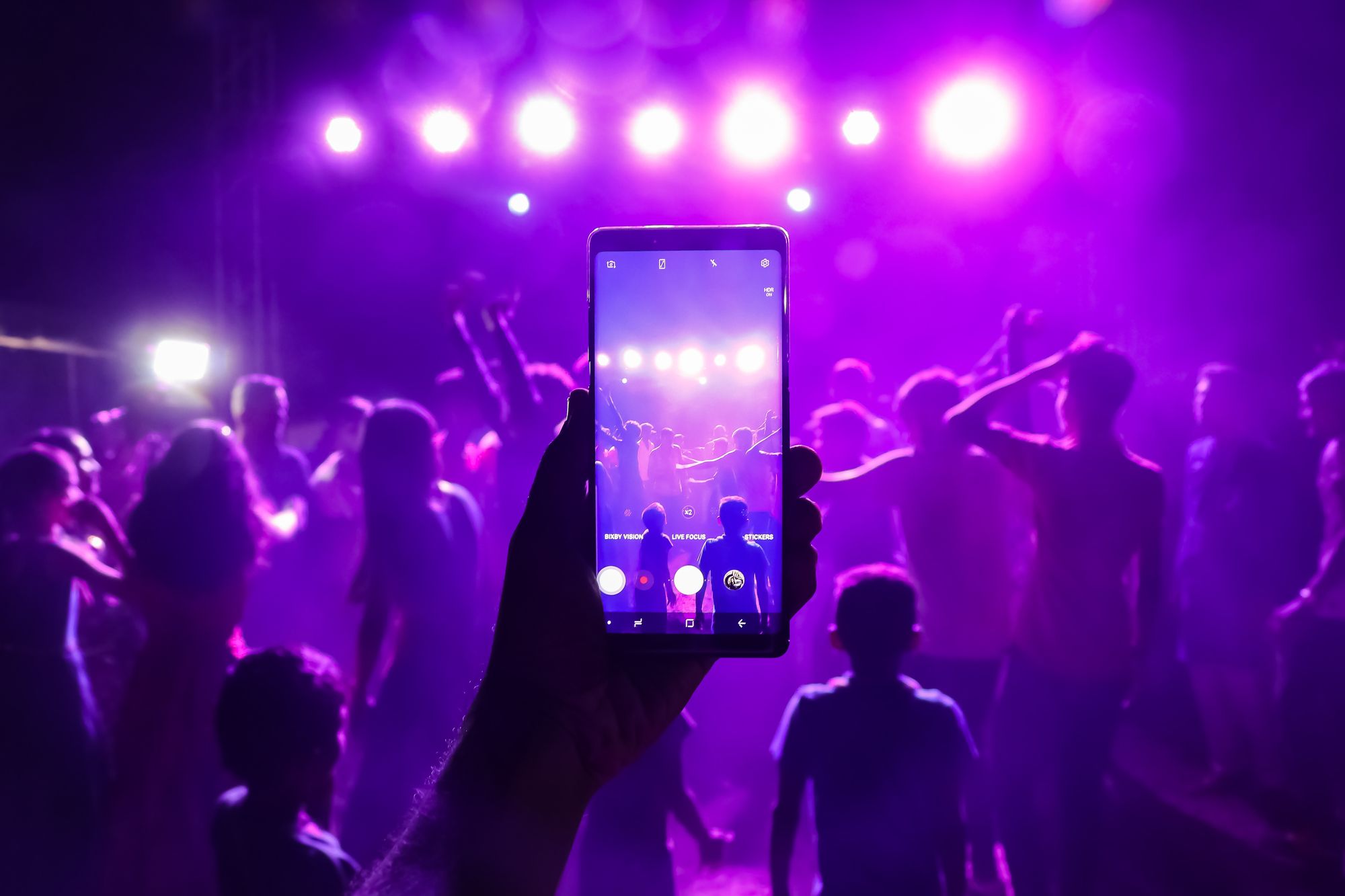

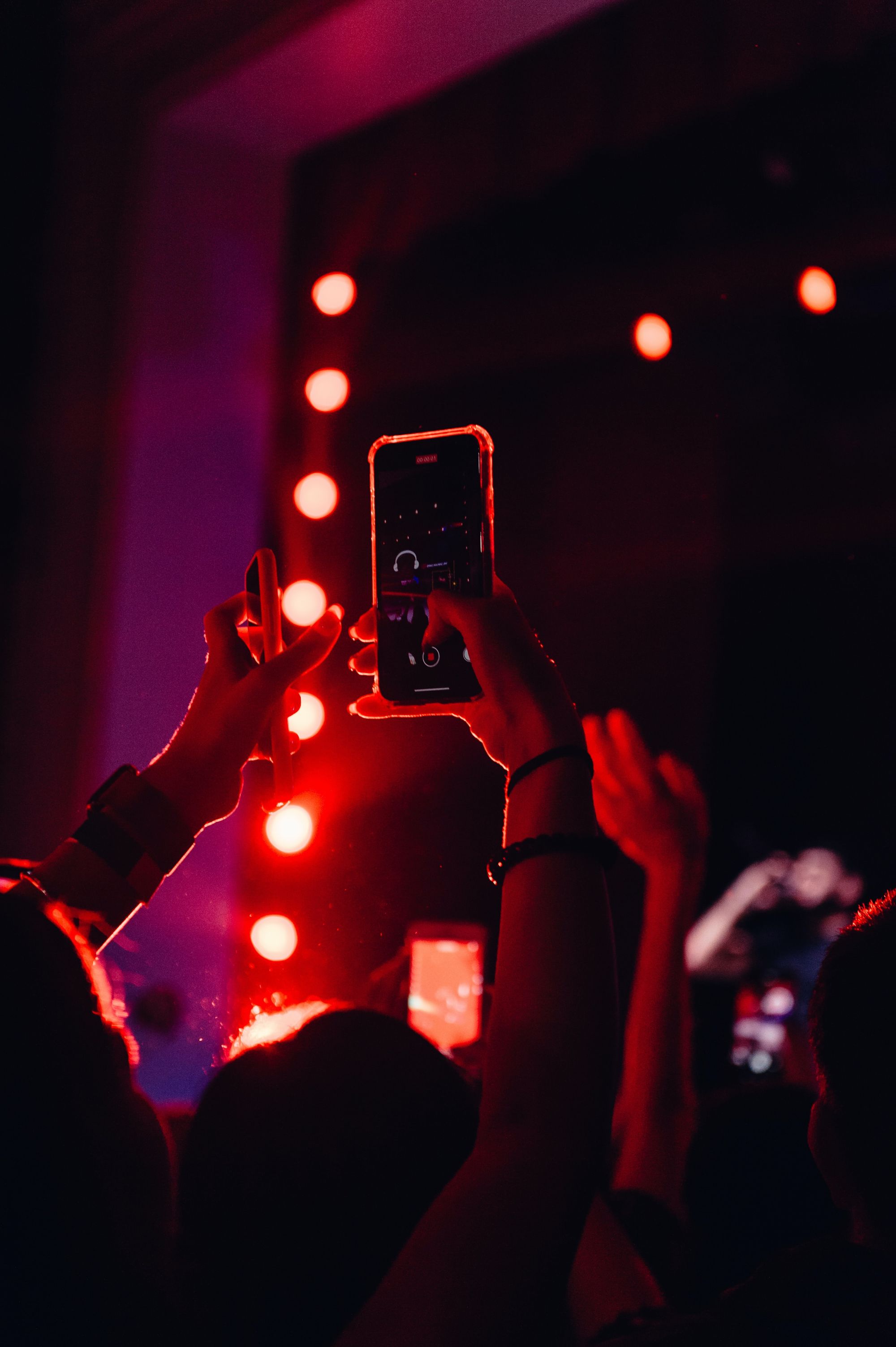
Vertical orientation offers several advantages. First and foremost, it maximizes screen real estate on mobile devices, allowing images to fill the entire frame without the need for cropping or scaling down. This format is especially well-suited for capturing portraits, full-length shots, and vertical landscapes, as it allows for a more immersive viewing experience.
If you want to learn how to create better vertical content, check out the tutorial (below) from Jeremy Cohen. Jeremy shares advice and techniques for creating vertical content, and also offers insight into ways photographers can use vertical content to bring more attention to their work.
Since so much content is consumed via social media, professional photographers are increasingly embracing the vertical format as a means of engaging their audience. But whether you're sharing your work on social networks or printed publications, using the vertical format in your photography portfolio can help you stay on-trend and connect with viewers in an effective way.
3D Photography
When we think of 3D photography, we usually think of 3D movies like Avatar, where characters and objects seemingly jump out of the screen. However, it's important to recognize that 3D photography encompasses far more than just the world of cinema.
Today, specialized software is helping 3D photographers push the boundaries of their artistry. For example, each of these artists use some form of 3D software to realize their vision:
Annibale Siconolfi
Annibale Siconolfi, also known as "Inward", is an artist and architect from Italy.
His art is characterized mainly by a complex 3D modeling of dystopian cities and futuristic landscapes.
Software used: Maxon Cinema 4D, Otoy Octane, Adobe Photoshop, Adobe After Effects, MOI3D
Marco Zagara
Marco Zagara is a visual artist based in Italy. He transports viewers into a realm of ethereal beauty by focusing on depth, color, and futuristic imagery.
Davansh Atry
Davansh Atry is a self-taught 3D artist and motion designer from India. He finds inspiration in the aesthetic of film photography and night photography.
Food Photography
While it may be easy to overlook the artistry behind food photography, so many talented individuals are bringing culinary creations to life in ways that captivate our senses and ignite our appetites.
Food photography has evolved into a true art form, where even amateur photographers are skillfully capturing the delectable textures, colors, and details of food. Take, for example, Kim Bainbridge, who won the Student Food Photographer of the Year Award in 2023 with this photo:

Food is incredibly diverse, so it makes sense that food photography is also diverse, with photographers experimenting with different styles and techniques. The food photographer known as Lenka is a master of creating moody visuals. If you want to learn how she created the moody composition below, we recommend you check out her blog.
So, whether you're a professional food photographer, a culinary enthusiast, or simply someone who appreciates a visually enticing meal, food photography is definitely a trend worth exploring and indulging in.
Macro Photography
Macro photography is a specialized genre that focuses on capturing extreme close-up shots of small subjects, revealing details that are often overlooked. With macro photography, you can explore textures, patterns, and colors of objects such as flowers, insects, droplets of water, or the intricacies of the human eye.
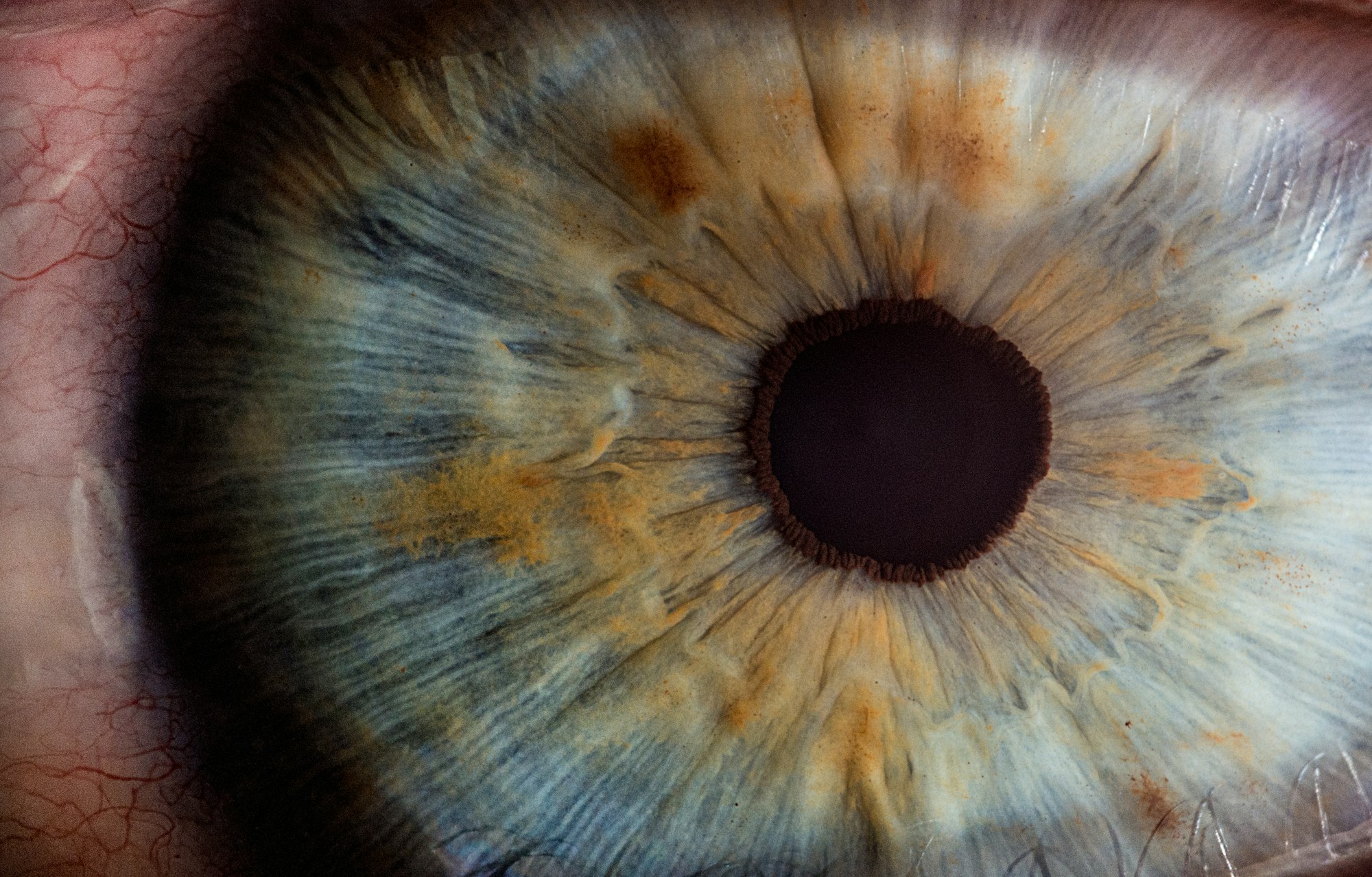
The true essence of macro photography lies in magnifying the subject to life-size or even larger on the camera's image sensor. This level of magnification allows you to showcase the hidden beauty that exists in the tiniest of subjects.
To achieve stunning macro shots, photographers often employ dedicated macro lenses that provide high magnification and superb close-up capabilities. These lenses allow you to focus on the subject at an incredibly close distance, resulting in razor-sharp details and a shallow depth of field, which beautifully isolates the subject from its background.
Adam Gor is a macro photographer who is renowned for his incredible talent in capturing the intricate beauty of butterflies. With each photograph, Gor not only showcases their beauty, but also evokes a sense of wonder and appreciation for these fragile creatures.
Patience and attention to detail are essential in macro photography. It's a game of precision, as even the slightest movement can throw off the focus. Photographers often rely on tripods, focus stacking techniques, and specialized lighting setups to ensure crisp, well-lit images.
So, if you have a fascination for the small wonders of the world and a desire to capture their intricate beauty, macro photography might just be for you.
Cinemagraphs
Cinemagraphs are a form of animated imagery that combines both photography and video. While cinemagraphs may appear similar to 3D photography at first glance, they offer a distinct visual experience. Unlike traditional videos that depict continuous motion, cinemagraphs are still images that incorporate subtle motion in specific areas, creating captivating and mesmerizing visual effects.
Creating a cinemagraph involves selecting a portion of a still photograph and looping it in a seamless manner. By isolating a specific element or action within the image, photographers can bring that element to life while keeping the rest of the scene static. This juxtaposition of motion and stillness within a single frame creates an enchanting and magical effect, capturing the viewer's attention and immersing them in the scene.
Gagan Sadana is famous for his street photography, with each of his cinemagraphs telling a story:
Cinemagraphs find applications in various industries and creative fields. In advertising and marketing, cinemagraphs are used to capture viewers' attention and convey brand messages in a unique and compelling way. They can be incorporated into website banners, social media posts, digital signage, and email marketing campaigns, adding an element of surprise and interactivity.
If you'd like to learn more about how to create a cinemagraph, we recommend this helpful article.
High-Contrast Photography
High-contrast photography emphasizes the extremes. In general, there are three types of contrast: lighting, color, and texture.
Most often, high-contrast photography features deep shadows and bright highlights. This creates a striking visual impact by enhancing the tonal range and emphasizing the textures, shapes, and patterns within the frame.
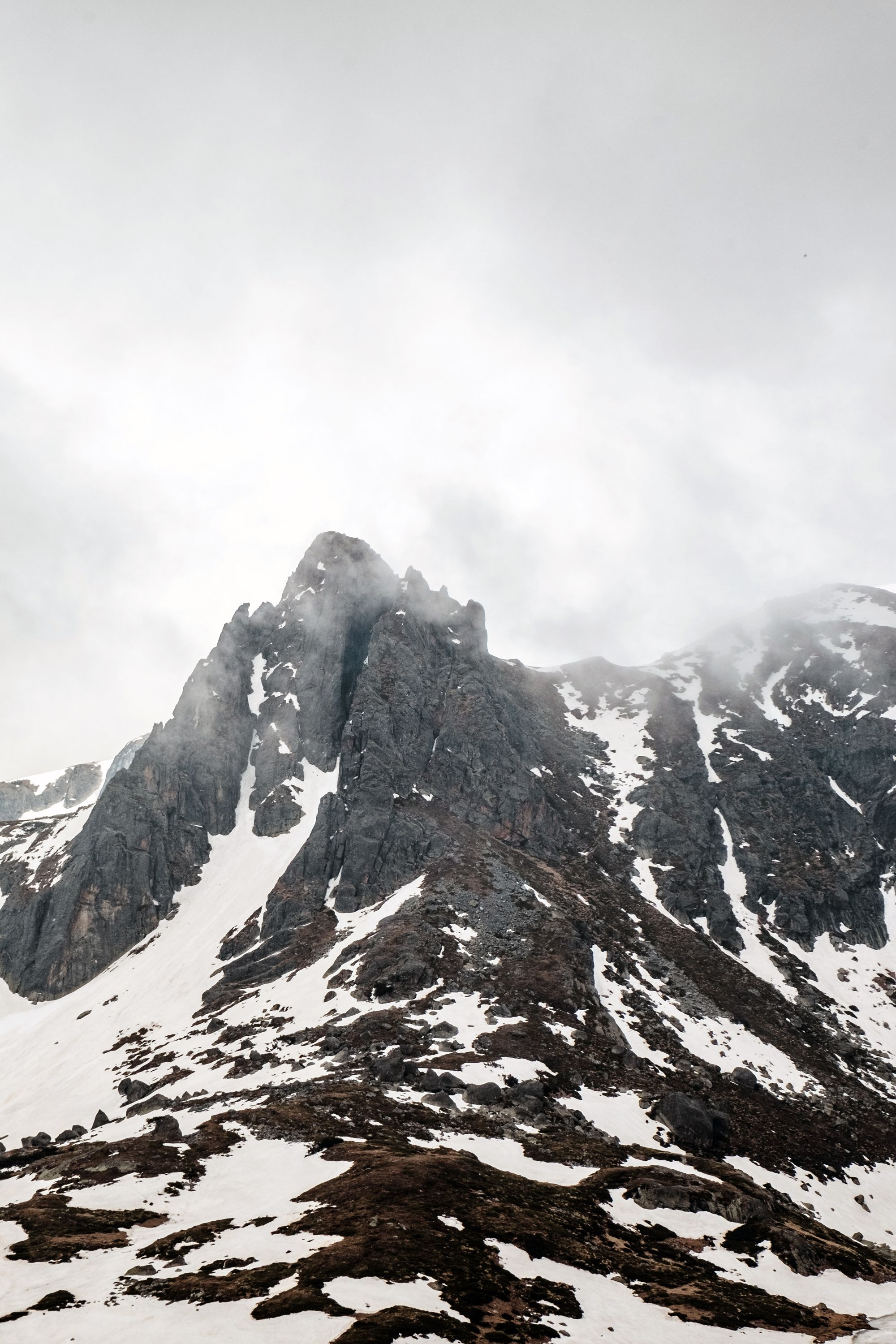
.jpg)
This trend has gained popularity across various genres, including portrait photography, street photography, landscapes, and even product photography. It allows photographers to evoke strong emotions, create a sense of mystery, and emphasize the subject's presence.
Daniel Bryn is a photographer based in Oslo, Norway. If you want to learn how he creates his stunning compositions (below), we recommend this article.
When we think of high-contrast photography, we often focus on the interplay of light and darkness. Instead of relying solely on the traditional elements of brightness and shadow, the images below showcase the power of contrasting colors to create a striking composition.
High-contrast photography offers a departure from traditional balanced exposures, offering a bold and visually captivating style that grabs the viewer's attention. So, if you're looking to make a statement with your photographs and create images that leave a lasting impact, diving into the world of high-contrast photography might just be the perfect artistic exploration for you.
Cyberpunk Aesthetics
Cyberpunk aesthetics were popularized by films like Blade Runner, books like Neuromancer, and video games like Cyberpunk 2077. But, despite its age, the cyberpunk genre is making a major comeback.
We think the resurgence of the cyberpunk genre can be attributed to its timely relevance. As we witness the increasing interconnectedness of our world, the ethical dilemmas surrounding artificial intelligence, and the blurred boundaries between digital and physical realms, this genre provides a thought-provoking exploration of the potential consequences and complexities of our technological trajectory.
The cyberpunk genre, with its futuristic, dystopian, and technology-driven themes, inspires photographers to create visually striking images that transport viewers to otherworldly places.
Dale Anne Scogings is a London-based artist whose work perfectly embodies this genre.
Using neon lights, vivid colors, dark backgrounds, sprawling urban landscapes, and a carefully crafted blend of technology mixed with a touch of nostalgia, Scogings invites viewers into a strangely alluring world.
As the interest in cyberpunk aesthetics continues to grow, photographers are pushing the boundaries of this genre, incorporating their unique perspectives and storytelling techniques. By capturing the essence of cyberpunk in their photographs, they contribute to the evolving narrative of this mesmerizing visual style.
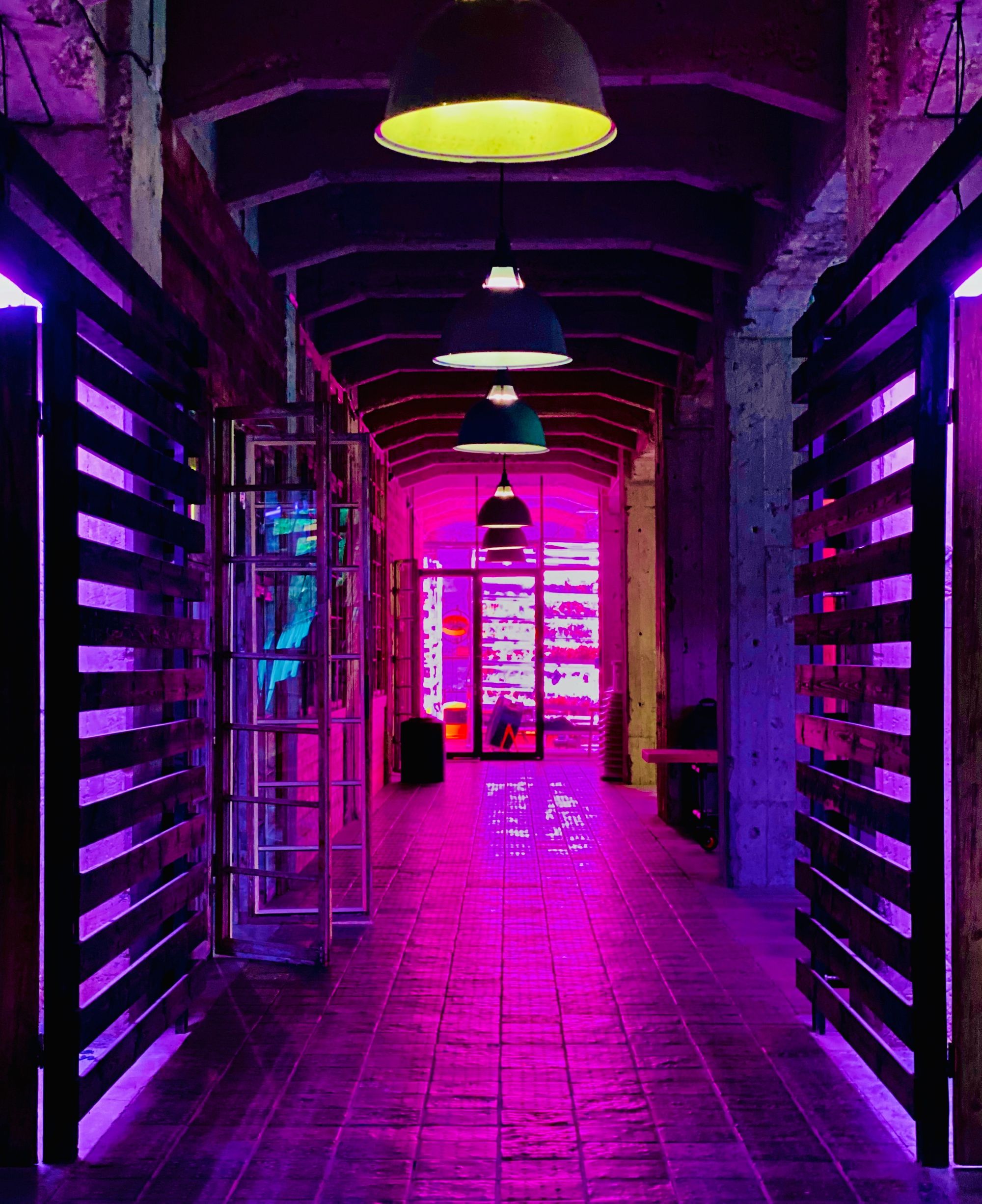
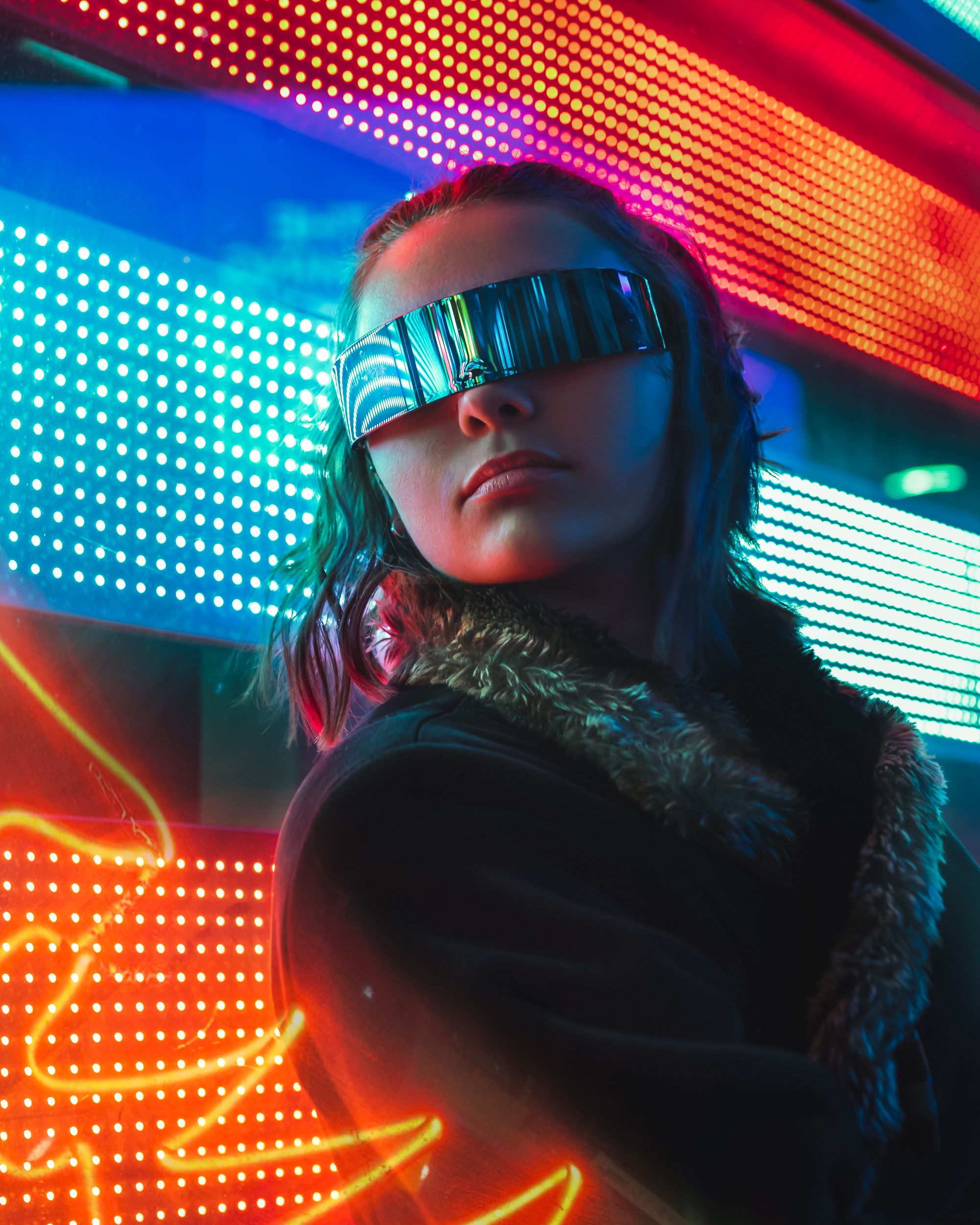
Embracing cyberpunk aesthetics in photography goes beyond neon lights and futuristic cityscapes. Cyberpunk explores a cautionary tale which urges us to reflect on the implications of our actions and the choices we make as we navigate our technology-driven world.
Surrealist Photography
A hundred years after the art movement was born, surrealism is making a comeback. While the subject matter may have evolved over the years, its core characteristics remain the same.
Surrealism seeks to explore the subconscious, dreams, and the irrational. Surrealist photography embraces these principles, creating images that challenge reality and blur the boundaries between the possible and the impossible.
Erik Johansson (b. 1985) is a Swedish photographer and visual artist based in Prague, Czech Republic. He's known for creating surreal worlds through the combination of photographs and focuses on capturing ideas rather than moments.
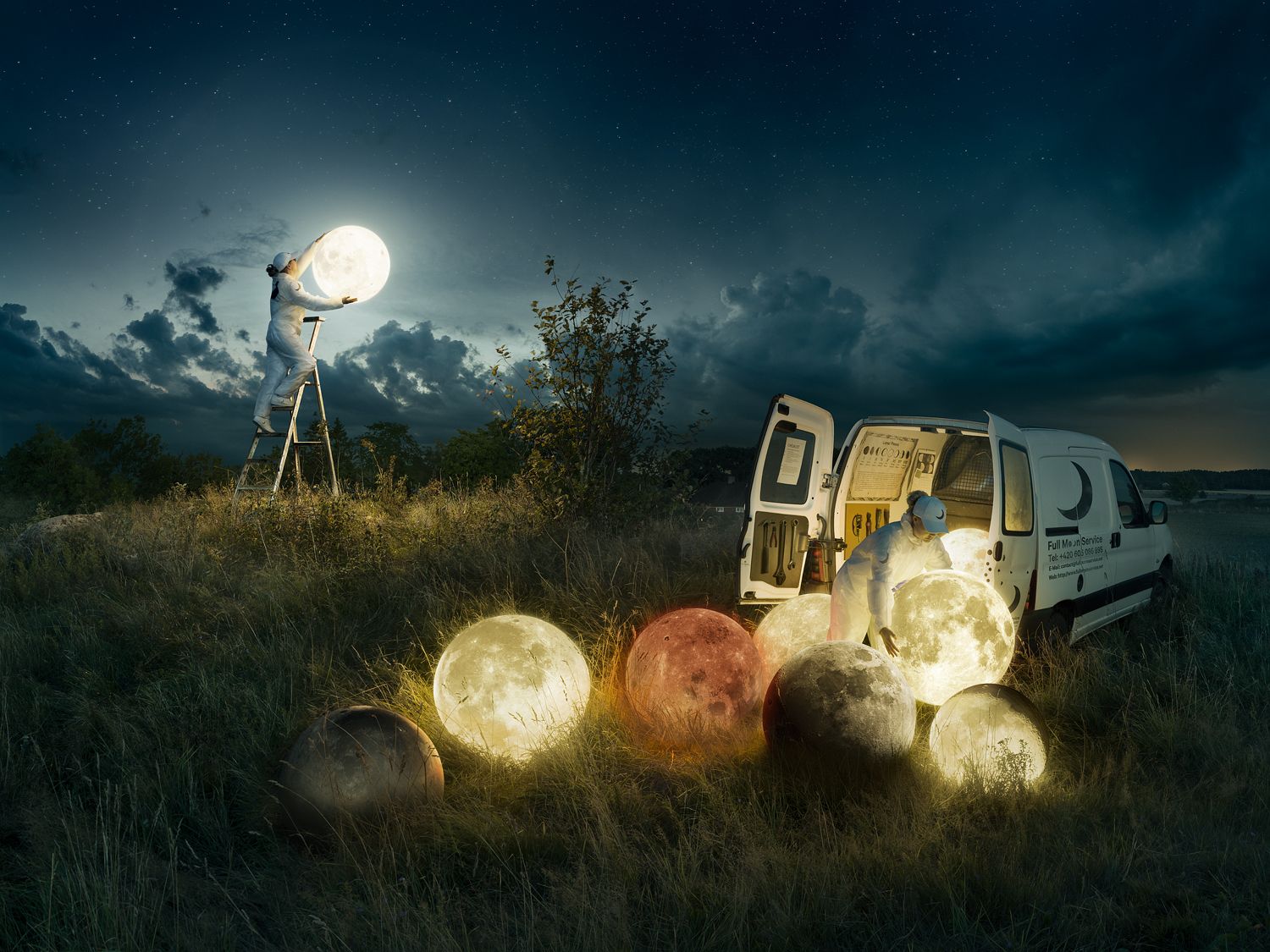
One of the reasons for the resurgence of surrealism in photography is the advent of digital technology and post-processing tools. With these advancements, photographers have greater flexibility and control to manipulate and transform their images. This accessibility has inspired a new generation of photographers to explore the possibilities of surrealism and experiment with their own unique visions.
Karen Khachaturov is an Armenian artist, who started his career as a documentary photographer. His pastel-colored universe conveys sense of alienation and loss of empirical experience. In most of his works, the heroes are half people/half objects, who look senseless and bored. This is a commentary on how the digital era has changed us into senseless beings.
With social media platforms giving photographers an avenue to share their work, surrealistic images have found a receptive audience. The ability to easily disseminate and discover surrealistic photography has further contributed to its trending status, with enthusiasts and admirers seeking out artists like the ones above.
Whether it's capturing dreamlike landscapes or exploring the depths of the human psyche, surrealistic photography offers endless possibilities for artistic expression.
Looking Ahead
As we reflect on the technology-driven photography trends that are dominating 2023, it's evident that the future of photography is limitless. From drone imagery to virtual tours, the convergence of technology and artistry is reshaping the way we capture, experience, and share visual moments.
As we look even further ahead to the trends of 2024, we also anticipate more rapid evolution. What innovative tools, techniques, and trends will emerge? Only time will tell.
